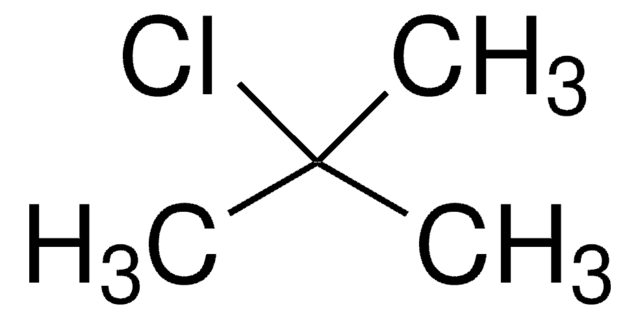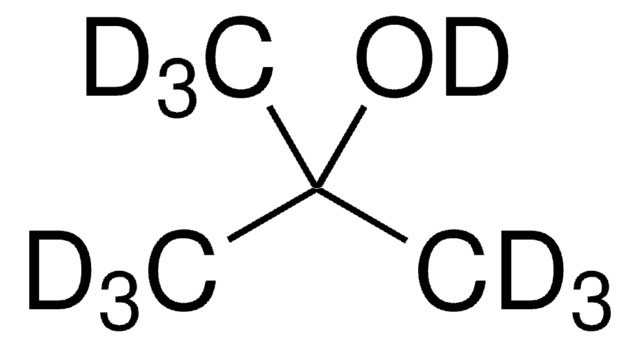308250
tert-Butanol
suitable for HPLC, ≥99.5%
Synonyme(s) :
Alcool tert-butylique, Triméthyl-carbinol
About This Item
Produits recommandés
Densité de vapeur
2.5 (vs air)
Niveau de qualité
Pression de vapeur
31 mmHg ( 20 °C)
44 mmHg ( 26 °C)
Pureté
≥99.5%
Forme
liquid
Température d'inflammation spontanée
896 °F
Limite d'explosivité
8 %
Technique(s)
HPLC: suitable
Impuretés
<0.050% water
Résidus d'évap.
<0.0005%
Indice de réfraction
n20/D 1.387 (lit.)
pH
7 (20 °C)
Point d'ébullition
83 °C (lit.)
Pf
23-26 °C (lit.)
Densité
0.775 g/mL at 25 °C (lit.)
λ
H2O reference
Absorption UV
λ: 215 nm Amax: 1.00
λ: 230 nm Amax: 0.50
λ: 250 nm Amax: 0.20
λ: 300-350 nm Amax: 0.01
Application(s)
food and beverages
Chaîne SMILES
CC(C)(C)O
InChI
1S/C4H10O/c1-4(2,3)5/h5H,1-3H3
Clé InChI
DKGAVHZHDRPRBM-UHFFFAOYSA-N
Vous recherchez des produits similaires ? Visite Guide de comparaison des produits
Description générale
Application
Used in the analysis of volatile organic compounds (VOCs) in alcoholic beverages by GC coupled to Flame Ionization Detector (FID).
Mention d'avertissement
Danger
Mentions de danger
Conseils de prudence
Classification des risques
Acute Tox. 4 Inhalation - Eye Irrit. 2 - Flam. Liq. 2 - STOT SE 3
Organes cibles
Central nervous system, Respiratory system
Code de la classe de stockage
3 - Flammable liquids
Classe de danger pour l'eau (WGK)
WGK 1
Point d'éclair (°F)
59.0 °F - closed cup
Point d'éclair (°C)
15 °C - closed cup
Certificats d'analyse (COA)
Recherchez un Certificats d'analyse (COA) en saisissant le numéro de lot du produit. Les numéros de lot figurent sur l'étiquette du produit après les mots "Lot" ou "Batch".
Déjà en possession de ce produit ?
Retrouvez la documentation relative aux produits que vous avez récemment achetés dans la Bibliothèque de documents.
Les clients ont également consulté
Protocoles
-Butanol; 2-Methyl-2-butanol; 2-Methyl-1-butanol; 3-Pentanol; 1-Butanol; 2-Methyl-1-propanol; 2-Pentanol, 98%; 3-Methyl-1-butanol; 1-Propanol
Notre équipe de scientifiques dispose d'une expérience dans tous les secteurs de la recherche, notamment en sciences de la vie, science des matériaux, synthèse chimique, chromatographie, analyse et dans de nombreux autres domaines..
Contacter notre Service technique








